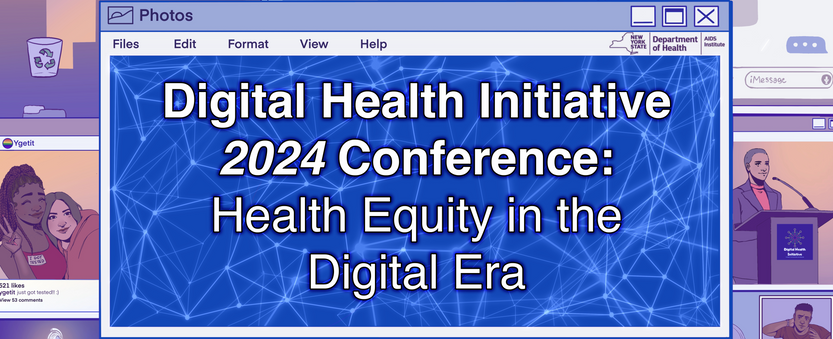
Glossary
Artificial Intelligence (AI)
Technology that enables computers and machines to simulate human intelligence and problem-solving capabilities — to understand, reason, learn and interact.
Clinical Informatics
Medical subspecialty that transforms health care by analyzing, designing, implementing, and evaluating health information and communication systems to improve patient care, enhance access to care, advance individual and population health outcomes, and strengthen the clinician patient relationship.
Digital Determinants of Health (DDoH)
Conditions in the digital environment that affect a wide range of health, functioning, and quality of life outcomes and risks.
Digital Health
A field that incorporates digital software, hardware, and services into healthcare and public health. It includes mobile health (mHealth) apps, electronic health records (EHRs), electronic medical records (EMRs), wearable devices, telehealth and telemedicine, and personalized medicine.
Digital Health Equity
The equitable access to, and distribution of benefits and harms from, digital health technologies.
Digital Therapeutics (DTx)
Services that deliver evidence-based therapeutic interventions driven by digital tools like apps, artificial intelligence, and virtual reality to prevent, manage, or treat a medical disorder or disease.
Electronic Health Record (EHR)
A digitized version of a patient's medical chart, providing a comprehensive view of patient care.
Generative AI
Models that can take raw data and “learn” to generate statistically probable outputs when prompted; generative AI can understand existing content and create new content from text, audio, video and other inputs.
Health Equity
The state in which everyone has a fair and just opportunity to attain their highest level of health. Equitable health care gives each person what they need to achieve that level of health, which means increasing efforts to reach and provide services for those that need more or specific services, especially those who have experienced systemic disadvantages.
Health Inequities
Differences in health outcomes and access to care that are unnecessary, avoidable, unfair, and unjust, often based on group status.
Healthcare Quality
According to the National Academy of Medicine, quality health care is care that is safe, effective, patient-centered, timely, efficient, and equitable. The World Health Organization also includes “integration” — meaning care and services that are coordinated across providers throughout prevention, treatment, and maintenance — as a critical characteristic of quality care.
Information Blocking
A practice that, except as required by law or covered by an exception, is likely to interfere with access, exchange, or use of electronic health information.
Patient Portal
Secure website or app that provides a patient or proxy access to their personal health information and medical records.
Patient Safety
“First, do no harm” is the most fundamental principle of any health care service. Patient safety is defined as “the absence of preventable harm to a patient and reduction of risk of unnecessary harm associated with health care to an acceptable minimum." Within the broader health system context, it is “a framework of organized activities that creates cultures, processes, procedures, behaviors, technologies and environments in health care that consistently and sustainably lower risks, reduce the occurrence of avoidable harm, make error less likely and reduce impact of harm when it does occur." https://www.who.int/news-room/fact-sheets/detail/patient-safety
Social Determinants of Health
Resources, such as availability of quality food, housing, economic opportunity, social relationships and community, transportation, education, and access to health services, of which the distribution across populations affects the length and quality of health and life.
Traditional AI
Algorithms modeled after the decision-making processes of the human brain that can “learn” from available data and make increasingly more accurate classifications or predictions over time.
21st Century Cures Act (2016)
Federal law that focused on “expediting discovery, delivery & development of new cures & treatments” and defined interoperability and “information blocking.”